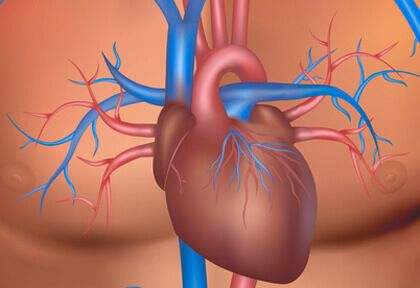Courtesy of Dr. Carlos Fava.
Aortic stenosis with cardiac failure or cardiogenic shock involves high mortality risk at short term. Surgery in these conditions is often unsafe, which leaves us with valvuloplasty, but only as a bridge to some other procedure, seeing as it is effective only for a short time.
 Few studies have looked into patients undergoing U/E TAVR. Though there is no data on its evolution, the present study has shown it to be safe and feasible,.
Few studies have looked into patients undergoing U/E TAVR. Though there is no data on its evolution, the present study has shown it to be safe and feasible,.
This study analyzed 40042 patients from the STS/ACC TVT Registry. 3952 of these patients (9.9%) received urgent/emergent TAVR (U/E).
Read also: Real-Life Functional Assessment of Coronary Stenosis: We Are Yet to Convert to It.
Compared against patients undergoing the elective procedure, U/E TAVR patients had a high prevalence of diabetes, kidney failure, prior stroke, EPOC, prior cardiac failure, atrial fibrillation, prior conduction conditions, prior MI, lower LV ejection fraction, mitral and tricuspid regurgitation. Mortality STS was also higher (11.8% vs 6.1%; p=<0.001), as was quality of life STS.
Ventricular assistance devices and the transapical or transaortic access sites, were more often used in the U/E TAVR patients.
Implantation success was lower in the U/E group (92.6% vs. 93.7%, p=0.007). Besides, kidney function deterioration and need of dialysis was higher in this same segment, as was hospital stay. There were no differences as regards life threatening bleeding, vascular complications, stroke, infarction, definite pacemaker need, conversion to surgery and leaks, compared against elective TAVR outcomes.
Read also: The Largest Registry on the ACURATE neo Valve.
Mortality at 30 days and one year was higher in the U/E group (8.7% vs. 4.3%, p<0.001 y 29.1% vs. 17.5%, p=0.001 respectively).
Mortality at 30 days and one year in patients undergoing U/E TAVR was associated to atrial fibrillation, need of oxygen use, access site other than femoral, and use of cardiopulmonary bypass, while the use of balloon expandable valve was associated to decreased risk.
Conclusion
U/E TAVR is feasible, with acceptable outcomes, and perhaps a reasonable alternative in this group of patients with severe aortic stenosis.
Comment
This analysis is important, because it shows that 10% of patients with aortic stenosis are emergency patients that require urgent action and fast decision making, and that U/E TAVR is feasible and safe, with acceptable mortality.
It is important to prevent patients from reaching this critical condition, but in case we face this scenario, we must be ready to act fast to prevent cardiac failure and kidney function deterioration in trying to ensure a better evolution.
Courtesy of Dr. Carlos Fava.
Original title: Outcomes Following Urgent/Emergent Transcatheter Aortic Valve Replacement: Insights from the STS/ACC TVT Registry
Reference: Dhaval Kolte,E T AL. J Am Coll Cardiol Interv. On line before print
Get the latest scientific articles on interventional cardiologySubscribe to our weekly newsletter
We are interested in your opinion. Please, leave your comments, thoughts, questions, etc., below. They will be most welcome.





